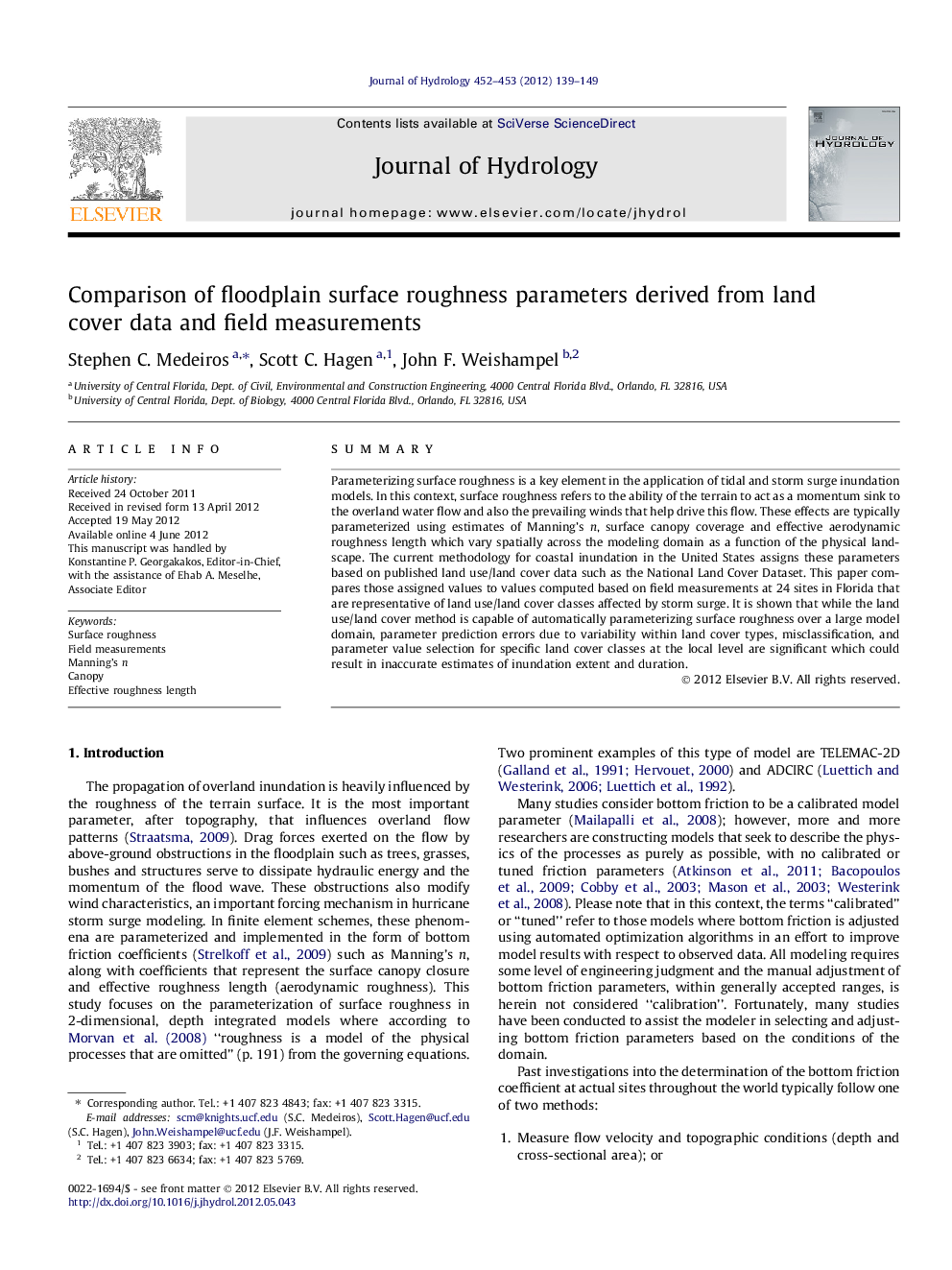| Article ID | Journal | Published Year | Pages | File Type |
|---|---|---|---|---|
| 6413978 | Journal of Hydrology | 2012 | 11 Pages |
SummaryParameterizing surface roughness is a key element in the application of tidal and storm surge inundation models. In this context, surface roughness refers to the ability of the terrain to act as a momentum sink to the overland water flow and also the prevailing winds that help drive this flow. These effects are typically parameterized using estimates of Manning's n, surface canopy coverage and effective aerodynamic roughness length which vary spatially across the modeling domain as a function of the physical landscape. The current methodology for coastal inundation in the United States assigns these parameters based on published land use/land cover data such as the National Land Cover Dataset. This paper compares those assigned values to values computed based on field measurements at 24 sites in Florida that are representative of land use/land cover classes affected by storm surge. It is shown that while the land use/land cover method is capable of automatically parameterizing surface roughness over a large model domain, parameter prediction errors due to variability within land cover types, misclassification, and parameter value selection for specific land cover classes at the local level are significant which could result in inaccurate estimates of inundation extent and duration.
⺠Surface roughness parameters were computed based on extensive field measurements. ⺠Comparison made between land cover class and field measurement parameterizations. ⺠Parameterizing surface roughness based on land cover class is deficient. ⺠Parameterization scheme based on physical structure of in situ conditions is needed.
